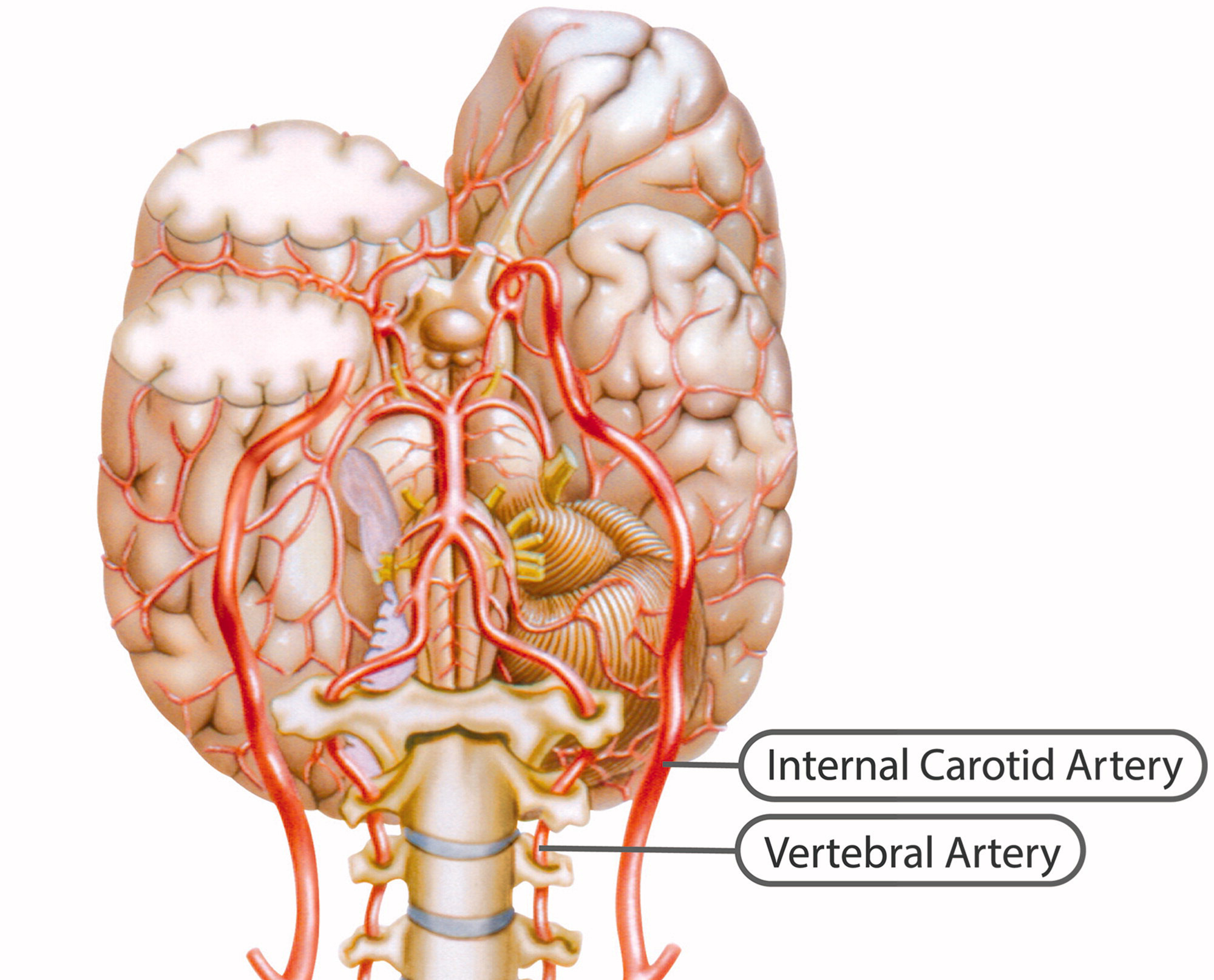Vertebral Artery Dissection in a Patient Practicing Self-manipulation of the Neck
SOURCE: J Chiropractic Medicine 2011 (Dec); 10 (4): 283–287
John S. Mosby, DC, MD, Stephen M. Duray, PhD
Division of Clinics,
Palmer College of Chiropractic,
Davenport, IA 52803, USA
OBJECTIVE: The purpose of this case report is to describe a patient who regularly practiced self-manipulation of her neck who presented with shoulder and neck pain and was undergoing a vertebral artery dissection.
CLINICAL FEATURES: A 42-year-old female patient sought care for left shoulder pain with a secondary complaint of left lower neck pain. Twelve days prior, she had had “the worst headache of her life,” which began in her left lower cervical spine and extended to her left temporal region. The pain was sudden and severe, was described as sharp and burning, and lasted 3 hours. She reported nausea, vomiting, and blurred vision.
INTERVENTION AND OUTCOME: Initial history and examination suggested that the patient’s head and neck pain was not musculoskeletal in origin, but vascular. She repeatedly requested that an adjustment be performed, but instead was referred to the local emergency department for further evaluation. Magnetic resonance angiogram revealed a dissection of the left vertebral artery from C6 to the C2-C3 interspace and a 3-mm dissecting pseudoaneurysm at the C3 level. She underwent stent-assisted percutaneous transluminal angioplasty combined with antiplatelet therapy (clopidogrel) and experienced a good outcome.
There are more articles like this @ our:
CONCLUSION: This case suggests that careful history taking and awareness of the symptoms of VAD are necessary in cases of sudden head and neck pain. More research is needed on the relationship between vertebral artery dissection and self-manipulation of the neck.
From the Full-Text Article:
Introduction
Vertebral artery dissection (VAD) is one cause of stroke in patients who are younger than 45 years old. [1-4] It is estimated that 1 to 1.5 per 100 000 individuals in the United States will experience this condition. [5, 6] Common presenting symptoms are headache and neck pain; thus, many of these patients may present for chiropractic care. As these symptoms are nonspecific and may be related to a number of underlying conditions, it can be difficult to properly diagnose a VAD. [7] Currently, medical treatment of this condition includes administration of anticoagulant drugs. [8]
Vertebral artery dissection is the result of a flap-like tear in the tunica intima of the vertebral artery. Because of this tear, blood enters into the tunica media causing a hematoma in the vessel wall. Although the mechanism of this condition is well documented, little research has been conducted concerning the clinical presentation of VAD. [9] Cassidy et al [10] and Murphy [11] recently suggested that some patients visiting chiropractic clinics with complaints of head and neck pain may have undiagnosed VAD. These patients may undergo cervical spinal manipulation for this pain, further complicating their VAD through a thromboembolic event. [10]
Read the rest of this Full Text article now!



Leave A Comment